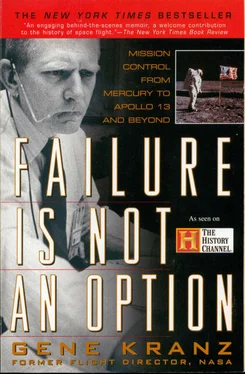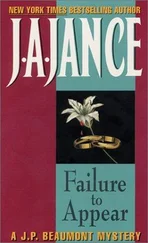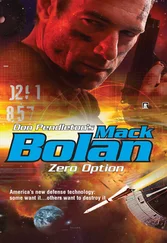May 15, 1963, Mercury-Atlas 9
Thirteen seconds after 8:04 in the morning EST, Faith 7 lumbered skyward, and the final mission of the Mercury program was bound for orbit. The early orbits went rapidly. Cooper precisely checked off the procedures for the eleven experiments his capsule carried. On the fourth orbit, he launched a six-inch satellite with a flashing light to test an astronaut’s visual acuity in space. The orbits clicked off, the systems performing perfectly and the early Go NoGo decisions easily made. Mercury Control operated on a two-shift basis for the first time. After the Go NoGo on orbit six, Kraft’s team handed over to John Hodge’s team. In my newly assigned role as assistant flight director Kraft had assigned me to support Hodge’s team. My vision of the flight director’s role in Mercury Control was based on associating with Chris during the pre-mission planning periods and watching him in action during missions. Kraft was called the “Teacher” because of his hands-on mentoring of his young charges. The longer mission duration and infrequent contacts during the mid-orbits of Cooper’s mission allowed me to study another flight director at work, John Hodge. Hodge was different from Kraft, less on edge and more dependent on his team members. I quickly sized up John as a flight director who sought to obtain consensus in selecting a direction and one totally at ease with his people—but not with his role as their leader. John was a damn nice guy.
Cooper, a celestial observer, enjoyed the middle period in drifting flight, with all the capsule systems powered down. His thirty-four-hour mission would take him through twenty-two orbits. With the control center, network, and capsule systems reacting flawlessly, it was easy to get lost in Cooper’s descriptions of the view from orbit.
When things are going well, the controllers slip into a mode of relaxed awareness. You tune your senses keenly to pick up even the slightest departure from the norm; it seems that you have a second sense running in the background, almost subliminal, that can pick up the slightest deviation. It could be a minor glitch in a telemetry measurement, a procedural step overlooked, or an unexpected observation from the astronaut. It can be the tone of voice of another controller. When you are well tuned, a second sense kicks in, looking for something out of order while you proceed with the normal or routine. The mission continued in this fashion through the nineteenth orbit.
Kraft’s team was in charge as the mission entered the gate for the final three orbits. The recovery forces were calling in, and Llewellyn, checking the retro times, anticipated a perfect finish for the final mission.
Emerging from the network coverage gap at Hawaii, Cooper began reporting to Scott Carpenter, his CapCom: “Scott, I wonder if you would relay to the Cape a little situation I had happen and see what they think of it. My .05G telelight came on after the light check. I have turned off both the .05G normal and emergency fuses. Relay it to them and get their idea on it, over.” The telelight was indicating that the capsule was sensing the onset of reentry gravity.
Mel Brooks, seated next to Arnie Aldrich at the systems console, unfolded his schematics and began tracing the .05G circuitry. After a brief consultation with Mel, Arnie reported to Kraft, “Chris, the signal that illuminated on Cooper’s panel changes the operation of the automatic control system. It is used to provide a steady roll rate and dampen the capsule motions during entry.” After giving Kraft a few seconds to digest his input, Arnie continued, “With the .05G indication, the automatic system cannot be used for retrofire. I’d like to do a few tests with Gordo.”
The joint testing began over the Cape and continued through the next orbit, with Cooper reporting the test results to John Glenn, the CapCom on board the Coastal Sentry . The testing confirmed that the automatic system had malfunctioned and was in reentry mode. Cooper was informed that retrofire would have to be performed manually, but after retrofire was completed the automatic system would be usable for the final phases of entry.
So far everything had gone well. The team had responded to the glitch, the controllers smoothly regrouping and updating the retrofire and entry procedures. I kicked into gear, getting the new reentry plans out on the Teletype and setting up the backup communications to the Coastal Sentry .
You can feel the atmosphere of a crisis center; it is almost like sensing the change in pressure when a storm moves in. In Mercury Control it consists of the noise level of the room—conversations change from an informal banter to crisp dialogue, thick manuals thump open, small huddles form at the consoles. The feeling is unmistakable, and when problems developed for Faith 7 I nonetheless felt secure: the teams were poised, professional, and competent.
I was confident that whatever the problem, Mercury Control and the remote site teams could handle it. The last-minute decision to expand from sixteen orbits to twenty-two got Cooper’s mission into the record books as the third longest manned spaceflight. The Russians had flown sixty-four orbits with Andrian Nikolayev, and forty-eight orbits with Pavel Popovich. Cooper’s flight now edged out Gherman Titov’s seventeen orbits. The increased duration however, moved the landing point from the Atlantic Ocean to the Pacific, resulting in reduced coverage at the time of retrofire and reentry. As the capsule moved toward its deorbit point, only three sites remained on the ground track. Cooper had worked around the small glitch in the .05G circuit by the twenty-first orbit and everything was returning to normal operation. Then all hell broke loose.
Jim Tomberlin’s job at Zanzibar was to complete the stowage and pre-retro checklists so that Gordo had an “all green” capsule, as he coasted to the Coastal Sentry site in the Pacific Ocean south of Japan, where John Glenn was CapCom.
Jim started reading the checklist only to be interrupted by Cooper. “Zanzibar, I have one item for you. My automatic control system inverter has failed, so I will be making a manual entry.” Tomberlin, momentarily startled, asked, “Has the automatic system inverter failed?” Cooper responded, “That is affirmative.”
Like a tennis match, Tomberlin again volleyed, “Have you tried the standby inverter?” Cooper’s response came like a firecracker, “Roger, it would not start.” Mystified, Tomberlin replied, “Roger. Then we better get on with the checklist now. Attitude permission to bypass.”
“Roger, retro rocket arm to manual,” Cooper replied.
The checklist dialogue continued for the next four minutes and when completed, Tomberlin switched gears and started a review of the backup procedures. During the six-minute pass, Gordo and the Mercury team at Zanzibar had prepared Faith 7 for retrofire and reviewed the backup procedure, and a potentially serious problem had been quickly addressed. We had come a long way in the two years and ten days since Alan Shepard’s launch.
Seventeen minutes later, Cooper was holding attitude, using the window horizon as he reported to Glenn on the Coastal Sentry, “Checklist complete except for the pyros.” After a few moments of banter, Cooper continued, “Oh, my automatic inverter failed along with a few other odds and ends. I will shoot the retros on manual and then reenter manually also.”
While waiting for the retrofire time, he added, “I’m looking to get a lot of experience on this flight.” Glenn’s response was laconic: “You’re going to get it.”
Moments later, John issued the retrofire countdown to Faith 7 . The Mercury program was coming to a close in the sky over the Pacific. The manual retrofire and reentry were virtually flawless. Forty minutes later, Cooper emerged from the capsule and stood on the deck of the aircraft carrier Kearsarge .
Читать дальше












